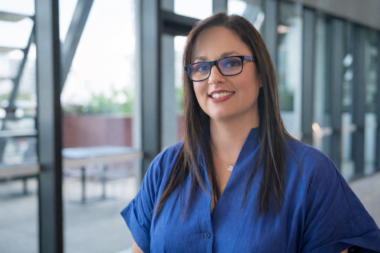Acting eSafety Commissioner Toby Dagg said the month of May, 2023 was also the biggest reporting month on record since eSafety’s cyberbullying scheme started in July 2015.
“Many parents are telling us they’ve found it hard to limit screen time since the pandemic. While greater device use might be the new norm, with it comes the need to understand how children are living out this part of their lives,” Mr Dagg said.
In 2019, eSafety received a little over 200 complaints from children aged eight to 13 years, jumping to almost 740 in 2022.
“We’re pleased that more Australian children and young people know we’re here to support them when platforms fail to act but the number of complaints from children in school years 5, 6 and 7 is concerning and continues to grow,” Mr Dagg said.
“We received around 230 cyberbullying complaints in May this year alone and around 100 of these involved children aged eight to thirteen experiencing this kind of harm. Nasty comments, offensive pictures or videos, and impersonation accounts are among the most reported issues.
“We tend to see a greater number of reports from children who have reached 13, which is the minimum user age recommended by most social media apps. However, children as young as eight are coming to eSafety in deep distress.
“The cyberbullying we’re seeing is increasingly sophisticated and deceitful. For example, children are setting up imposter accounts to undermine the reputation of their bullying target, triggering yet more abuse from other children.”
Mr Dagg said while smart devices opened a wealth of opportunities for children, they also carried risks.
“There’s no denying the internet is an incredible outlet for self-expression and creativity, as well as a great source of information, including wellbeing information. Parents and carers can play a key role helping establish boundaries that help their children avoid potential harms.
“We encourage parents to show an interest in the games their children play online, and the profiles they follow on social media – just as they would make time to throw a ball at a local park or play a board game. Being plugged into what your child is doing can help you anticipate when they might need support and advice.
“It’s also important to be across who your children are following more generally on social media. There are a lot of accounts canvassing concepts and ideas that might not be age appropriate.
“As much as possible, encourage children to use devices in open areas of the home, rather than the bedroom or bathroom. That way you can answer questions, understand who they’re talking to and spot signs that might suggest some sort of distress.
“Also use these holidays to double check age-appropriate parental controls and privacy settings are activated before they go back to school. School term is typically a time when we see a jump in reports.
“In situations where your school has restricted mobile phone use, please keep up this level of vigilance and engagement outside of school hours. Online bullying is a broad societal issue and happens at all hours of the day and night, often following children home from school. Regular conversations are critical, no matter the level of device use.
“Regardless of your child’s age, eSafety.gov.au has resources to help parents and carers be positive role models and online safety advocates.”
For online safety information for parents and carers, visit: eSafety.gov.au/parents
For advice on how to set parental controls across home wi-fi, devices, software and more, visit: eSafety.gov.au/parental-controls
For online safety webinars for parents and carers, visit: eSafety.gov.au/parents/webinars
For advice on the latest games, apps and social media, visit: eSafety.gov.au/esafety-guide
About us:
The eSafety Commissioner is Australia’s independent regulator for online safety. Our purpose is to help safeguard all Australians from online harms and to promote safer, more positive online experiences.
eSafety acts as a safety net for Australians who report cyberbullying, serious online abuse or image-based abuse. We can also investigate and remove seriously harmful illegal and restricted content, including online child sexual exploitation material. Find out more: eSafety.gov.au
Contact details:
Contact [email protected] or phone 0439 519 684 (calls only, no text)


